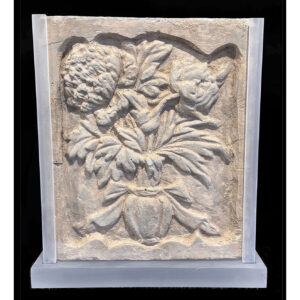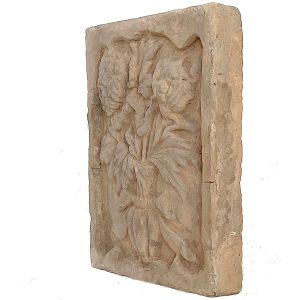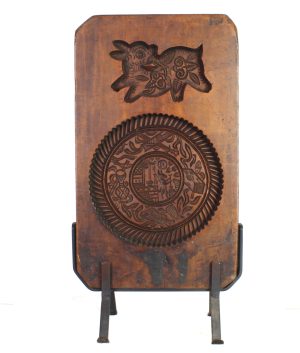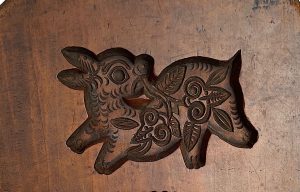SOLD Song Dynasty Tile of Vase with Flowers, China (3347BLE) $995 with Acrylic Stand
$995.00H: 11” W: 9.5” D: 1.65” | FREE SHIPPING
This earthenware brick tile bordered with a deep scalloped frame depicts a vase with a bouquet of propitious flowers: a chrysanthemum and a peony wrapped with an elegant ribbon. Tiles like this were made to decorate the large numbers of buildings created during the prosperous Song dynasty and to adorn tombs. This elegant brick is in good condition for its age with expected chips and cracks, some restoration of background and a re-glued frame break on each side. It has earth adherents from its burial in a tomb.



